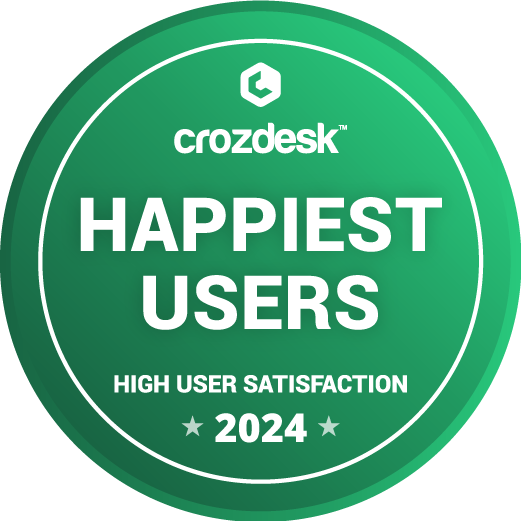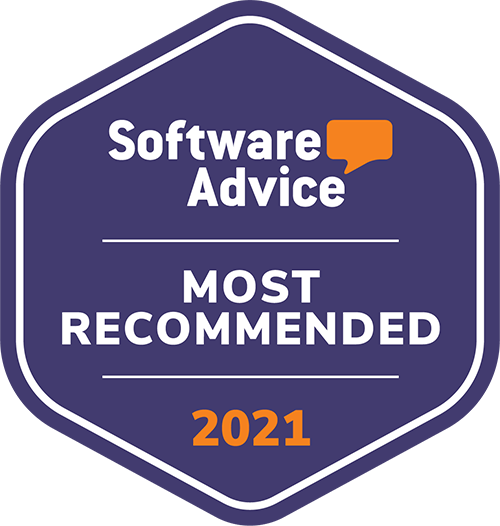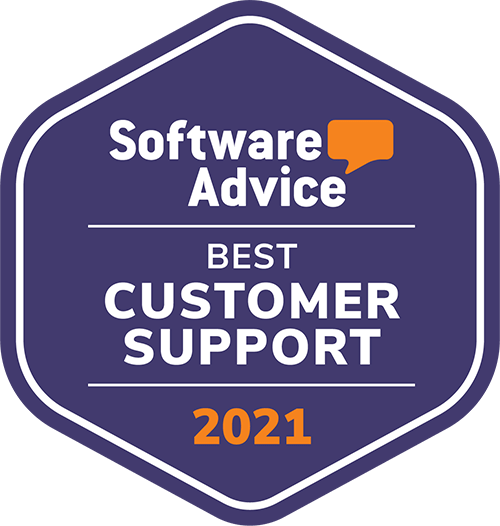It wasn’t a hard choice to select SmartSurvey. Not only did they understand what we were looking to achieve right from the start, they presented a solution that represented everything we needed.
Survey Objectives
Survey Objectives

Helping you map out the best route for delivering on what you’ve set out to achieve
Creating your survey design without firstly establishing your goals or objectives is a bit like starting a journey to a new destination without your map or GPS.
While you may still make it to the place you were trying to reach, without the right guidance there’s less chance of you achieving this in the safest and most efficient way.
Whatever survey you’re creating, whether it’s an employee survey, a customer survey, or some other type of survey, it’s likely that you will be doing it in order to obtain information that you can take some level of positive action with, whether that’s improving conditions for employees or the products and services you deliver to your customers.
That’s where objectives and goals are helpful in guiding you and ensuring that you’re giving yourself the best chance to attain what you set out to achieve.
Why setting survey goals and objectives is important
Having an effective plan in place is essential to your survey’s purpose, not only in helping you to keep it organised and focused, but to ensure you keep your questions as relevant as possible, so that when it comes to analysing your results, you’re more likely to gain useful answers that you’re able to take effective decisions and actions with.
What are goals?
Essentially your survey goals refer to your overall long term aims for running a survey, which you can find out by asking yourself, what it is that you want to know and why.
What are objectives?
In contrast, your objectives help break this down into the actions or steps you need to deliver if you’re to best achieve your goal.
Tips for setting objectives
While an effective plan is essential to keeping your survey on track, the objectives of your survey are equally important to maximising the reliability and usefulness of your survey results. So, it’s important to ensure they are as strong as you can make them.
One of the most effective ways to achieve this is to ensure they are SMART, namely that they are Specific, Measurable, Achievable, Relevant and Time-based.
For example, if you were looking to run an employee survey due to worries over a growing sense of detachment among some of your employees, using this formula to shape your objectives could help you in the following ways:
S = Specific:
Rather than saying ‘we want our employees to be engaged’, you could try to be a bit more specific with something along the lines of ‘we want to increase employee engagement’, which will be more valuable to your overall objective.
M = Measurable:
Objectives that are measurable can be the difference between knowing that you’ve achieved your goal or being much less certain. To make your objective measurable you need to set yourself a target such as, ‘we want to increase employee engagement from 65% to 90%’.
A = Achievable:
Be careful to ensure your objectives are obtainable, because if you set them too high it could harm the momentum of what you’re are trying to achieve, and result in you falling way short of your original target. So, while setting yourself a target to increase engagement from 70% to 90%, is specific and measurable, it’s much less achievable than increasing engagement from 70% to 80%.
R = Relevant:
Given that your objectives will be the steppingstones to helping you achieve your overall goals; you also need to make sure it is relevant to these goals. Subsequently, if your overall goal is to improve work satisfaction, employee productivity and reduce staff turnover rates, then the statement ‘we want to increase employee engagement from 70% to 80%’ should also be relevant to your overall goals.
T = Time-bound:
Unless you provide time-constraints to your objectives you’re less likely to generate the sense of urgency and focus needed to reach your target. So, if you want to increase employee engagement from 70% to 80%, maybe set yourself a 6- or 12-month target to achieve this.
Besides working to ensure your objectives are SMART, it can also be valuable to test these out with other people before issuing your survey, so you can use their input to refine your objectives.
You may want to test them out with other members of your team or wider organisation, or if it’s customer surveys that you’re working on, maybe a sample of your customer audience.
If you feel that you don’t have a sufficient representative sample to reach out to within your existing customer base, then you might like to consider trying a Live Consumer Panels service. Thanks to the ability to customise your audience based on a specific sample size and target criteria, consumer panels enable you to quickly deliver the answers you need, saving you time and money, as you only pay for what you need.
How objectives shape your survey
While we’ve already discussed how different methodologies and concepts can shape your objectives, it’s equally important to be aware of how your questionnaire’s objectives can impact the shape of your wider survey too.
Target audience:
If we look at the target audience to begin with, it’s not hard to appreciate how your objectives can influence the targets you choose to reach out to.
For example, if your objective was to reduce turnover, it’s obvious that this is an internally focused objective and therefore only applicable to an employee audience, as opposed to an externally focused objective, such as trying to increase your product share of a market, where you would need to reach out for the views of a customer audience.
Your target audience can be further refined when your objectives are even more focused. For example, if you were a manufacturer of stair lifts and wanted to introduce a new product to the market, it’s likely you’ll want to get the views of a specific demographic groups, such as those aged 65 and over with a healthy disposable income who are more likely to be interested in your products.
Distribution choice:
Your objectives can also affect your choice of survey distribution method, as you’re likely to use different tools for an internal compared to an external audience group. Demographics can make a difference too.
For example, for organisations looking to distribute a survey internally to their employees it’s likely that the majority will tend to use an instantly recognisable and frequently used platform such as email. In contrast, businesses looking to reach out externally to their customers will be typically more likely to choose from a much wider range of options in order to attract and engage respondents. Survey distribution methods could be anything from web pop ups and SMS to QR codes or reaching out via social media channels.
If your objective is to reach out to a specific demographic, this can make a difference to your choice of survey distribution method too. So, if you wanted to reach a younger audience you would be more likely to get a higher response rate with an SMS survey, as opposed to email that would likely appeal more to older people, who are less likely to be so connected to their smartphones.
Question choice:
Besides your choice of survey distribution method, your objectives can also influence the questions you ask in a survey.
When we are conducting research, our objectives at the very highest level will usually fall into one of two camps. It will either be a quantitative exercise to quickly gather data, in order to categorise and support a fact-finding mission such as how many people own a dishwasher, or one that’s more qualitative in approach, in order to explore people’s perceptions, feelings or understanding of an issue, such as staff satisfaction with management and their working conditions.
When we are trying to gather data quickly, closed end questions are usually the best option, with recipients either offered Yes or No options, or asked to select their answers from a list of options. This contrasts with qualitative objectives where open ended questions are the preferred option, giving recipients the space, they need to really express how they feel about something.
Further points to consider
What are you looking to learn/identify/measure?
While we’ve already discussed the importance of effective measurement in surveys and ensuring your objectives are SMART, in order to give yourself the best chance of meeting the aims and objectives of your survey, it’s also important to be clear from the outset what you want to learn or identify.
As long as you have an overall goal for your survey, then it should provide you with the level of clarity you need about the purpose of your survey research, as survey goals aim to answer what it is that you want to know and why.
Who is the target audience for your survey?
While it’s important to be clear about what you want to identify, learn and measure, it’s equally vital to know exactly who you need to be targeting if you’re to get the information you need.
To help identify this you need to revisit the original goals and objectives of your survey research and then examine your existing data to pinpoint who you need to be targeting.
For example, if your ultimate goal was to improve your customer retention rates, you may want to cleanse and segment your data to identify your most loyal contacts among existing customers and details for former customers.
This would potentially allow you to send two different survey questionnaires to loyal customers and former customers, so you could find out what the former group most likes about your company, as well as the reasons why the latter group choose to leave. You could then use the feedback from both groups to make improvements that could help you to further increase your customer retention rates in the future.
Should you be looking for quantitative or qualitative information, or both?
When it comes to the purpose of your survey questionnaire and type of information you should be looking to collect, whether quantitative, qualitative or both, it really depends on your survey needs and ultimately what you’re looking to find out.
For example, if you were just looking to see how many of your respondents owned something, you would go for the closed questions of the quantitative approach, as opposed to if you needed to examine respondent views on a particular issue you would be much better offer with the open-ended questions of the qualitative method.
However, don’t feel you need to go with one approach only, as you may be looking to collect a mix of facts and figures, as well views on a particular topic of interest, which in this instance you would be better off including a mix of both quantitative and qualitative questions. Essentially, it’s about ensuring you’re using the best approach to meet your survey’s requirements.
How will the data be used and reported?
Once you’ve gathered and analysed your data, you need to be clear about exactly how you’re going to use it and the purpose of your survey report, if you’re to gain the maximum value from running your survey.
For example, if you were involved with HR surveys and were planning to run an employee satisfaction survey, it could be that you plan to use the feedback they provide to make further improvements to staff working conditions with the objective of increasing employee productivity.
This could also include a detailed reporting process, where you email a report of the survey’s findings among staff and management, which also include the actions you will take to improve working conditions and timelines when you hope to complete them.
By taking such an open and honest approach as this, you’re also more likely to gain a greater commitment from your staff moving forward.
How are we different?
UK based
Your data will be stored and processed here in the UK for your peace of mind.
Fanatical support
We pride ourselves on going above and beyond for our customers, providing expert advice and support whenever you need it.
You're in safe hands
Our secure platform and robust data protection measures ensure your data is safe and secure with us. We are ISO27001 and Cyber Essentials Plus certified.
We're human
We understand the importance of personal interaction, which is why we offer a human touch alongside our cutting-edge technology.
Accessibility matters
We're committed to making our surveys accessible to everyone, with a range of features to support those with disabilities.
Unlimited responses
With no limits on the number of responses you can collect, you can be sure your survey will reach as many people as possible without it being cost prohibitive.

Don’t just take our word for it
Over 500,000 users have registered to use SmartSurvey.


We couldn't be happier with SmartSurvey, we love its functionality and flexibility. This means we have been able to use one survey tool across many parts of the business.








Get in touch
We are ISO27001 certified, registered under the Data Protection Act and fully compliant with EU Privacy Laws.
Access to a knowledgeable account manager for personal assistance for when you most need it.
Our friendly design team is on hand to assist with any bespoke design and custom development requests.
We succeed if you succeed. Our goal is to help you carry out effective research and we’re here to help you achieve that.
